International Human Rights Organizations are key in protecting human rights and helping humanitarian causes worldwide. The 1993 UN World Conference on Human Rights showed how important these groups are. With hundreds of thousands of active NGOs, they fight for human rights through advocacy and education.
Groups like Amnesty International, with over seven million members, support victims of human rights abuses. They also fight for people’s rights. Organizations like Global Witness and the Kimberley Process have made a big difference, too. They work to stop conflict diamonds and ensure diamonds are conflict-free.
Introduction to Human Rights
Human Rights Organizations are vital in today’s world. They help protect human dignity and promote international human rights. With hundreds of thousands of NGOs, they make a big impact. Groups like Human Rights Watch, with 450 staff, are leading the way.
Key Aspects of Human Rights
International Human Rights Organizations are key in promoting tolerance and open debate. The Open Society Foundation is a great example, giving out thousands of grants each year. Their work is crucial in promoting human rights worldwide.
Key Takeaways
- International Human Rights Organizations play a vital role in protecting human rights and promoting humanitarian causes worldwide.
- There are hundreds of thousands of active human rights NGOs globally, working to promote Human Rights through various means.
- Organizations like Amnesty International and Human Rights Watch are making a significant impact in promoting International Human Rights and protecting human dignity.
- The Kimberley Process and Global Witness are examples of organizations working to prevent human rights violations and promote conflict-free practices.
- International Human Rights Organizations are crucial in promoting tolerance, open debate, and transparency, and their role is becoming increasingly important in today’s world.
- The work of these organizations is evident in the improvement of human rights situations in various countries, and their continued efforts are necessary to promote human dignity worldwide.
Understanding International Human Rights Organizations
International human rights organizations are key in fighting for rights everywhere. They follow Human Rights Law and push for Human Rights Advocacy. The Universal Declaration of Human Rights (UDHR), from 1948, lists 30 rights for everyone.
The UDHR has led to over 80 human rights treaties. Its ideas are found in many global agreements. The main human rights ideas are that everyone has rights, they are connected, and they can’t be separated.
Definition and Core Purpose
These groups aim to protect and promote human rights. Their main goal is to make sure everyone is treated with respect. They’ve been around since the early 1900s and have grown a lot.
Historical Development
In 1976, two big human rights treaties came into effect. This was a big step forward. Now, every UN member has signed at least one of these treaties, showing a worldwide commitment to rights.
Types of Organizations
There are many kinds of human rights groups. These include NGOs, international bodies, and government agencies. They all work together to improve human rights.
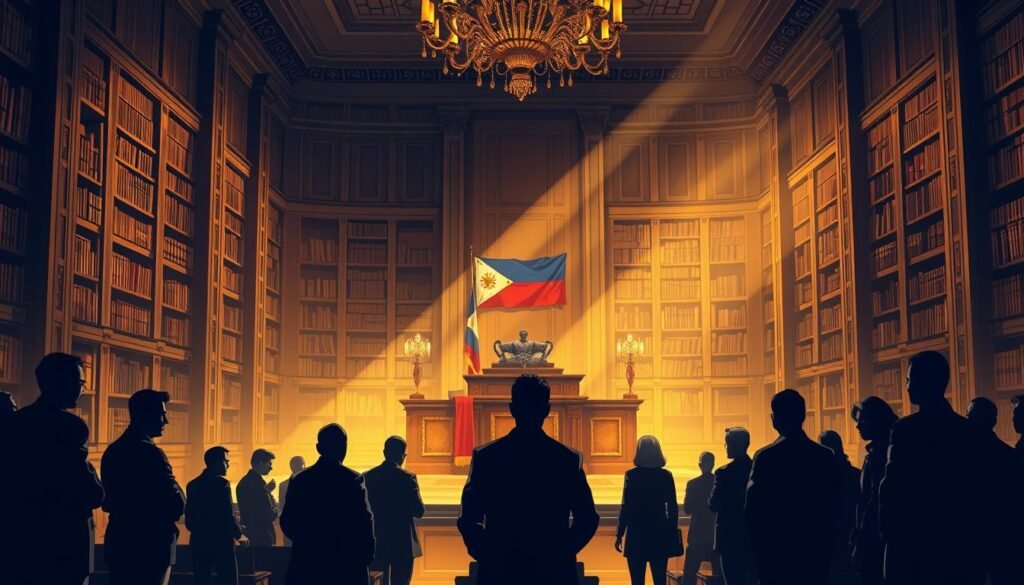
Groups like Amnesty International and the United Nations Human Rights Council are well-known. Amnesty has seven million members worldwide. The UN Human Rights Council works to protect rights through global cooperation.
The Global Impact of Human Rights Organizations
Human rights organizations play a big role in spreading Human Rights Protection and Human Rights Education across the globe. They use education, awareness, and advocacy to promote human rights.
Recent data shows these groups have made big strides. For example, Amnesty International has fought against the death penalty for over 45 years. This effort has led to big steps towards banning it in places like Malaysia.
These organizations also protect human dignity by helping victims of rights abuses. They work with governments and other groups to make sure justice is served.
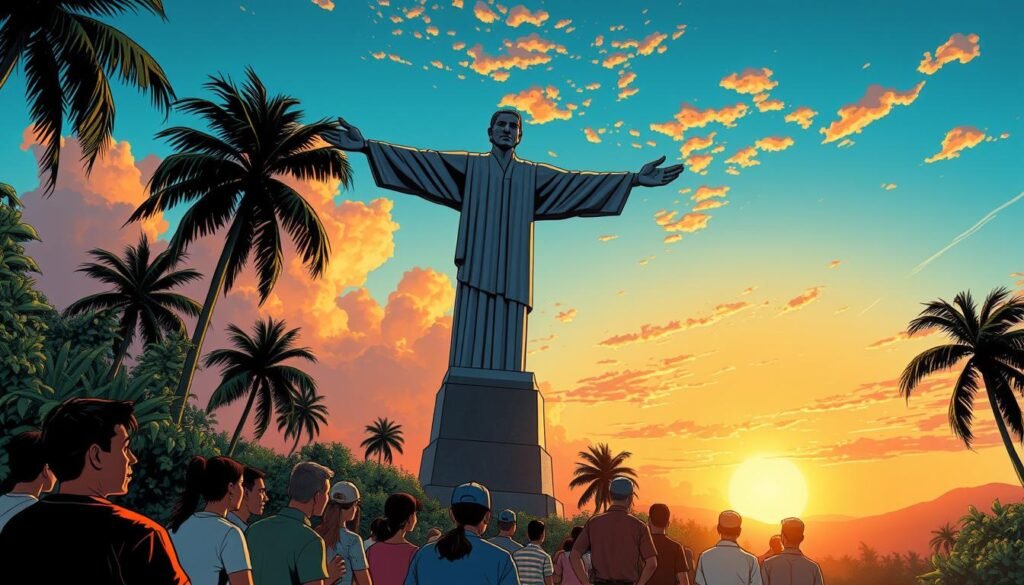
They’ve achieved many things, like ending mandatory death sentences in Malaysia and making all non-consensual sex rape recognized in Switzerland. These wins show how much human rights groups impact Human Rights Protection and Human Rights Education worldwide.
Key Functions and Responsibilities
Human rights organizations are key in spreading Human Rights Awareness and Human Rights Protection worldwide. They do many important things. They watch and record human rights abuses, fight for human rights, and help victims get justice.
These groups work hard to make people know about human rights. They also teach about human rights. They help those hurt by human rights abuses and work with governments and others to stop these abuses.
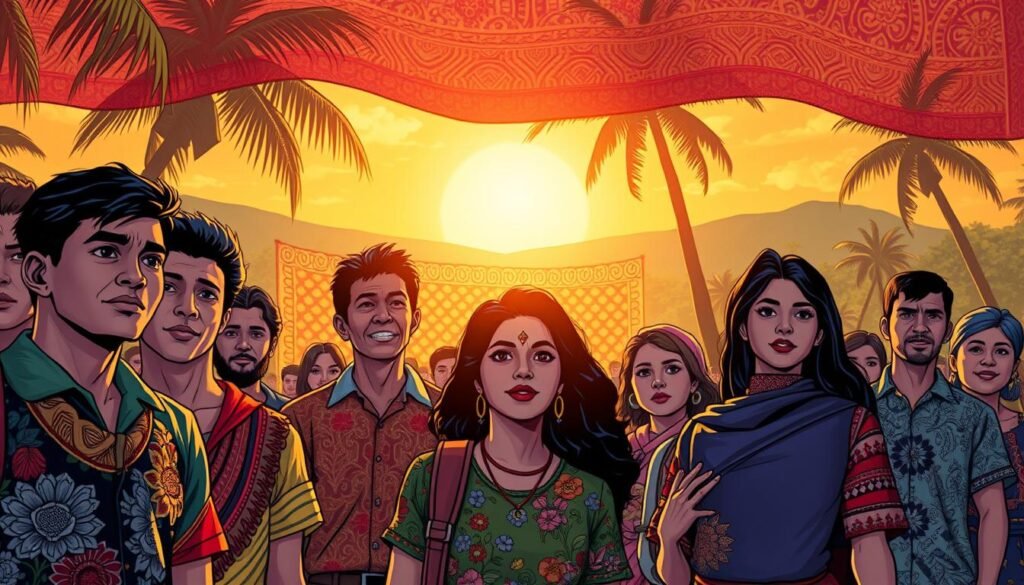
- Monitoring and documenting human rights violations
- Advocating for human rights and providing legal support and justice to victims of human rights violations
- Raising awareness about human rights and promoting human rights education
- Providing support to individuals and communities affected by human rights violations
By doing these things, human rights groups help make sure everyone knows about and respects human rights. They are very important in making sure everyone is free, respected, and treated equally.
The UN Universal Declaration of Human Rights says governments must protect human rights. Human rights groups make sure governments do their job. They help keep human rights safe everywhere.
Major International Human Rights Organizations
International Human Rights organizations are key in fighting for human dignity worldwide. There are over 400 groups recognized globally, both secular and religious.
Notable names include Amnesty International, Human Rights Watch, and the International Committee of the Red Cross. They use advocacy, education, and awareness to promote International Human Rights.
They help victims of human rights abuses and fight for their rights under Human Rights Law. Here are some major players:
- Amnesty International: with over 10 million members and supporters worldwide
- Human Rights Watch: documenting human rights violations in over 100 countries
- International Committee of the Red Cross: operating in over 80 countries, providing humanitarian assistance and advocating for the protection of human rights
These groups are vital in pushing for International Human Rights and defending human dignity. Together, they can greatly influence Human Rights Law and foster a global human rights culture.
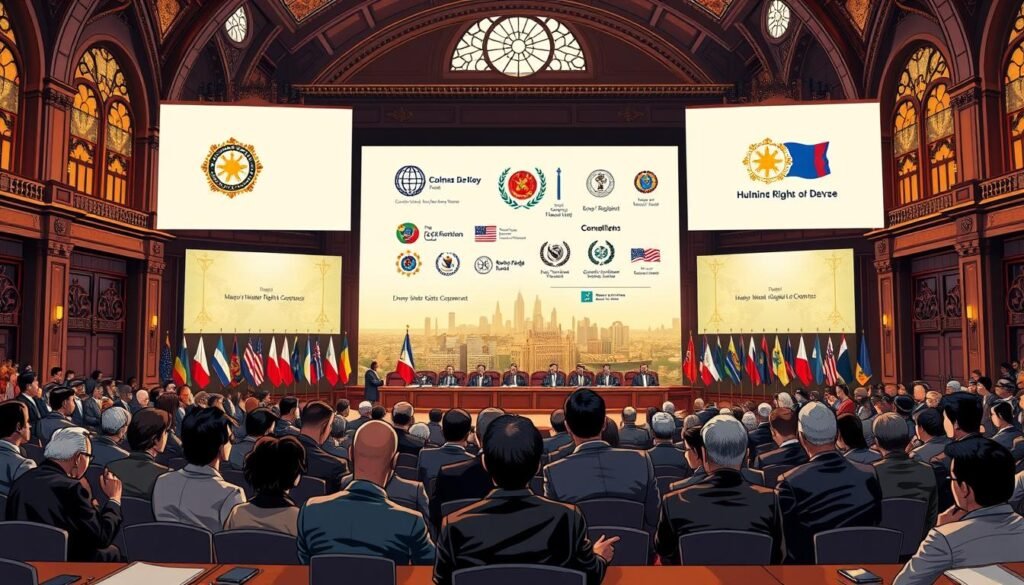
Methods of Operation and Intervention
Human rights groups employ different ways to support Human Rights Advocacy and protect dignity. They do this through investigations, report making, and awareness campaigns. Their aim is to uncover rights abuses, create reports, and inform the public about rights issues.
Some key methods include:
- Investigation processes to gather information about human rights violations
- Report generation to document and publicize human rights issues
- Public awareness campaigns to educate the public about human rights and promote Human Rights Education
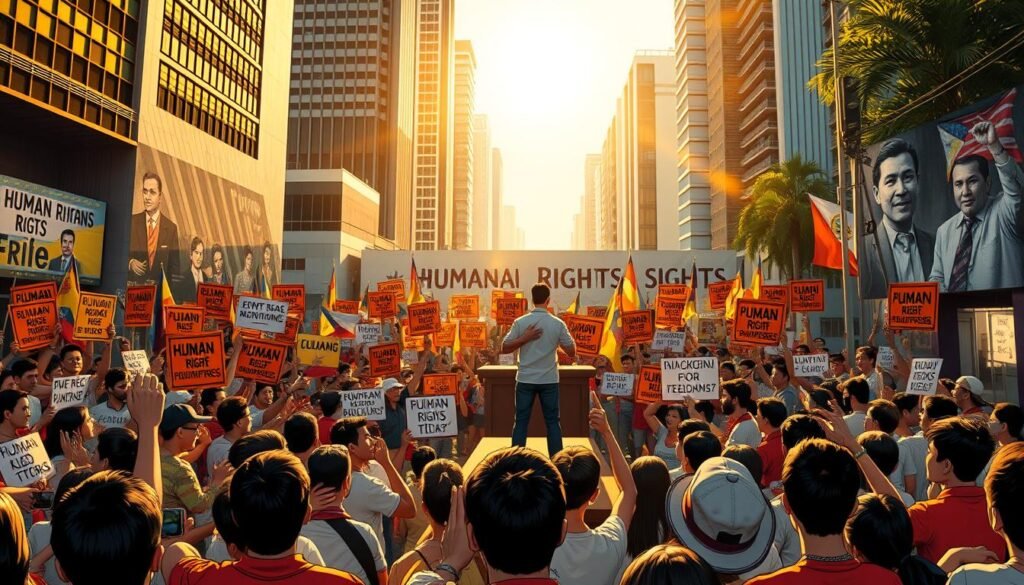
These methods are vital for advancing human rights and safeguarding dignity. Through these efforts, human rights organizations can greatly influence the world. They help promote Human Rights Advocacy and Human Rights Education.
Regional Focus: Human Rights in Southeast Asia
In Southeast Asia, Human Rights Protection is a big deal. Many countries struggle to protect human rights. The Association of Southeast Asian Nations (ASEAN) was formed in 1967 to bring peace and prosperity. Yet, ASEAN has been slammed for not having a human rights body.
The United Nations says Human Rights Awareness is key. In Southeast Asia, groups are fighting to highlight issues like torture and human trafficking. Their work is vital for Human Rights Protection and making sure governments act right.
Some major human rights problems in Southeast Asia include:
- Forced labor and human trafficking
- Torture and ill-treatment
- Freedom of assembly and expression
- Death penalty and executions
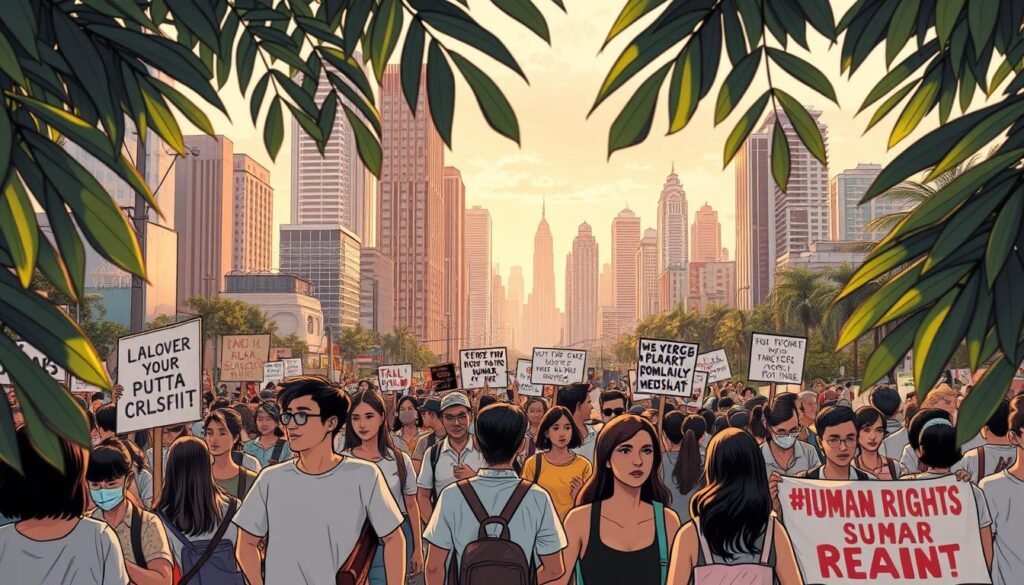
It’s crucial to boost Human Rights Awareness and Human Rights Protection in Southeast Asia. Governments, groups, and people must join hands to tackle these issues. We must ensure everyone’s rights are respected and protected.
| Country | Human Rights Issue |
|---|---|
| Indonesia | Torture and ill-treatment |
| Malaysia | Forced labor and human trafficking |
| Philippines | Death penalty and executions |
Collaboration with Governments and NGOs
Human rights groups work with governments and NGOs to push for Human Rights Law and protect dignity. This teamwork is key to achieving human rights goals. Together, they create frameworks, build diplomatic ties, and launch joint projects to advance human rights.
The UN helps over 85 countries with their elections, covering many election aspects. The UN also has a project to improve reproductive health care. Plus, the Permanent Forum on Indigenous Issues was set up in 2001, with equal parts from governments and indigenous peoples.
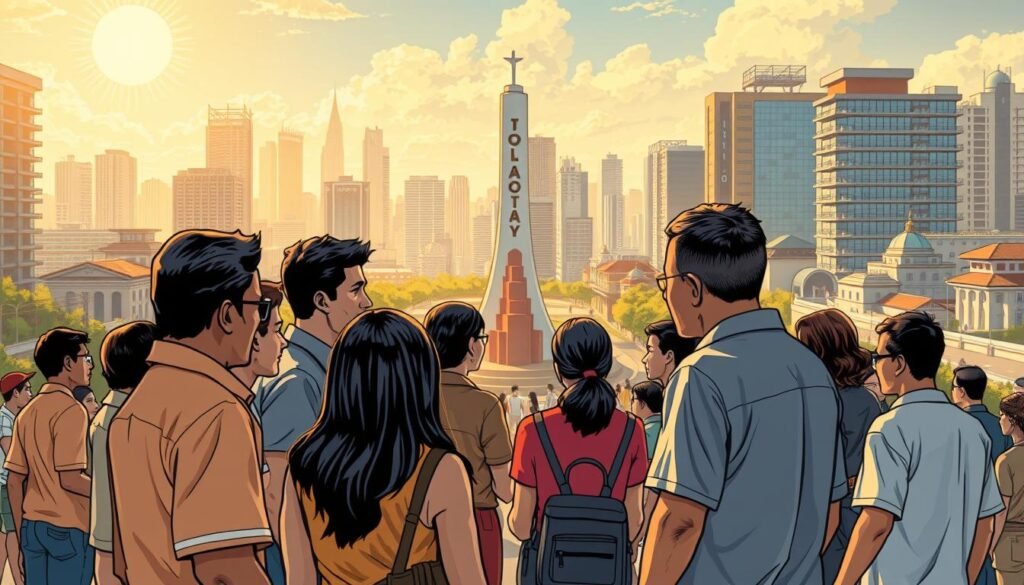
Working together, human rights groups and governments are vital for Human Rights Advocacy and dignity protection. Their partnerships, diplomatic efforts, and joint projects have made big strides in human rights. Here are some important points about their collaboration:
- Partnership frameworks: Human rights groups and governments create frameworks to support human rights and dignity.
- Diplomatic relations: They build diplomatic ties to advance human rights and protect dignity.
- Joint initiatives: Together, they launch initiatives to promote human rights and protect dignity.
In summary, the partnership between human rights groups and governments is crucial. Their work has led to significant progress in human rights and dignity. It’s vital to keep this collaboration going to meet the goals of Human Rights Law and Human Rights Advocacy.
Funding and Resource Management
Human rights groups struggle with funding and managing resources. This affects their ability to teach Human Rights Education and defend human dignity. Only a small part of venture capital and start-up accelerators focus on Human Rights Awareness.
Organizations like HURIDOCS get money from different places. This includes grants from foundations, governments, and private companies. The Oak Foundation, Google, and the European Commission help HURIDOCS. They fund initiatives like human rights education and awareness programs.
It’s key for human rights groups to manage their funds well. This means handling grants, meeting requirements, and using resources wisely.
Some ways to manage funds and resources include:
* Getting money from different places
* Working with other groups
* Investing in tech and buildings
* Training staff and volunteers
Digital Age Impact on Human Rights Advocacy
The digital age has changed how we advocate for human rights. It brings both chances and challenges. Human Rights Protection is key to keep people’s rights safe online.
A report by Human Rights Watch shows how digital tools help reach more people. But, it also stresses the need for Human Rights Law to adapt to new tech fast.
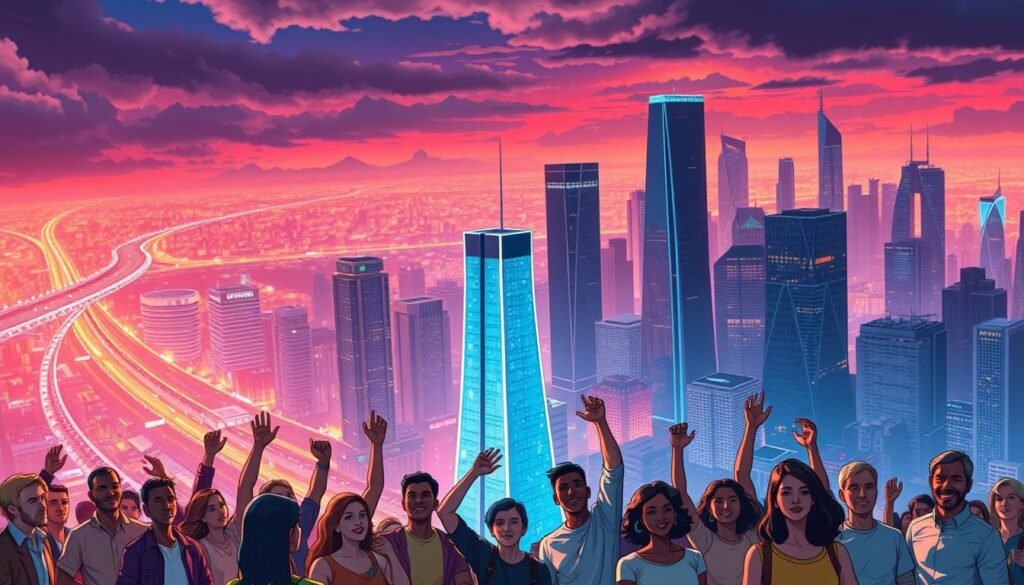
Social Media Influence
Social media is a big help for human rights groups. It lets them spread the word and get people involved. Here are some ways it’s used:
- Raising awareness about human rights issues
- Mobilizing support for human rights causes
- Providing a platform for marginalized voices
Technology in Documentation
Technology is also key in documenting human rights abuses. It helps groups gather and study data better. This makes their cases stronger and their advocacy more effective.
Challenges Facing Human Rights Organizations
Human rights groups are key in fighting for Human Rights Advocacy and keeping dignity alive. Yet, they face big hurdles. These include political pushback, not enough resources, and safety risks.
Some major hurdles for these groups are:
- Political resistance: Many governments and groups push back against human rights efforts, making it hard to work.
- Resource limitations: These organizations often don’t have enough money or support to do their job well, especially in Human Rights Education.
- Security concerns: Those who defend human rights often face danger, like violence and threats, which can stop them from doing their work.
Despite these obstacles, human rights groups keep pushing forward. They find ways to overcome these issues. This includes getting more support, finding funding, and keeping themselves and their team safe. 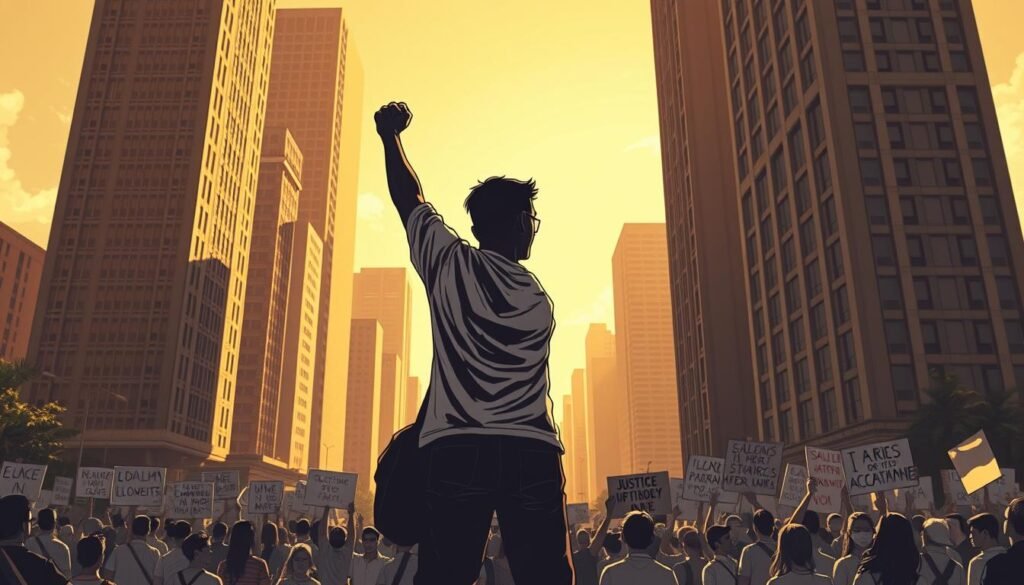
Success Stories and Case Studies
Human rights groups have made big strides in Human Rights Protection and Human Rights Awareness. The UNFPA says these efforts have helped a lot, especially in gender equality and women’s rights. You can learn more at human rights case studies.
For example, they’ve helped educate Bedouin kids in Khan al-Ahmar village. They’ve also given aid to those in need. These actions show how vital Human Rights Protection and Human Rights Awareness are for dignity and happiness.
These success stories and case studies highlight the value of human rights work. By focusing on Human Rights Protection and Human Rights Awareness, we can build a fairer world.
| Case Study | Location | Outcome |
|---|---|---|
| Promotion of education for Bedouin children | Khan al-Ahmar village | Improved access to education |
| Provision of humanitarian relief | Khan al-Ahmar village | Improved living conditions |
The Philippine Context: Local and International Cooperation
The Philippines has a complex human rights scene. Many groups work to uphold Human Rights Law and protect dignity. They aim to tackle human rights abuses and help victims through local and international teamwork. The country has a national human rights framework, which supports Human Rights Advocacy efforts.
According to the Amnesty International report, the Philippines has faced many human rights challenges. These include extrajudicial killings and enforced disappearances. To tackle these, international groups work with local ones to support and push for Human Rights Law. Their work is key in promoting Human Rights Advocacy and protecting rights.
Some key stats show the human rights situation in the Philippines. There were about 15,000 antidrug operations from January to May 2022. The Commission on Human Rights (CHR) looked into 111 new complaints of alleged killings by August 2022. These efforts show the ongoing need for Human Rights Advocacy and cooperation to uphold Human Rights Law and protect dignity in the Philippines.
Future of Human Rights Advocacy
The future of human rights advocacy is complex and shaped by several emerging trends and innovations. Human Rights Education is key in promoting human rights and protecting dignity. As technology advances, human rights groups are using new strategies to promote awareness and achieve success.
Some of the key trends shaping the future of human rights advocacy include:
- Increasing use of technology to promote human rights
- Growing importance of social media in human rights campaigning
- Need for innovation in rights protection
The UN says Human Rights Education is vital for tolerance, understanding, and peace. As the world gets more connected, it’s crucial to promote Human Rights Awareness and protect dignity. Social media has changed human rights campaigning, with activists using Twitter and Facebook to advocate.
Looking ahead, it’s vital to keep promoting Human Rights Education and Awareness. This ensures human rights are protected and respected. By working together, we can build a more just and equitable world for everyone.
Building Public Support and Engagement
Human rights groups are key in fighting for Human Rights Protection and Human Rights Law. They must win public support to succeed. The third source says they need to engage people to protect human dignity.
Getting the public on board is vital for these organizations. They can do this by spreading awareness, getting people to support their causes, and teaming up with others. The importance of community engagement is highlighted for this purpose.
Here are some ways to build public support and engagement:
- Establishing smooth and transparent channels of communication with governmental counterparts
- Maintaining regular and transparent relationships with authorities
- Conducting advanced analysis of each contact and local dynamics to identify points of leverage and mutual concern
By engaging the public, human rights groups can push for Human Rights Law and defend human dignity. This is crucial for a fair and just society where all can enjoy their rights.
Conclusion: Strengthening Global Human Rights Protection
Strengthening global human rights protection is very important. Human Rights Advocacy helps promote and protect human rights worldwide. Through education, people learn about their rights and those of others, building respect and empathy.
The Universal Declaration of Human Rights (UDHR) states that all people have certain rights and freedoms. It has led to over 70 human rights treaties worldwide. The UDHR is a standard for all people and nations to strive for.
Human Rights Advocacy needs the help of organizations, governments, and individuals. Together, we can ensure everyone’s rights are respected. Success in human rights is measured by public support, not just formal recognition.
In summary, protecting human rights globally is key to a better world. Supporting advocacy and education helps everyone have a chance to succeed and reach their goals.
FAQ
What is the role of international human rights organizations?
International human rights groups help protect human rights all over the world. They do this through advocacy, education, and raising awareness. They also support victims of human rights abuses and fight for their rights.
What is the definition and core purpose of human rights organizations?
Human rights groups aim to protect and promote human rights. Their main goal is to make sure everyone is treated with dignity and respect.
What are the different types of human rights organizations?
There are many types of human rights groups. These include non-governmental organizations (NGOs), international groups, and government agencies. Each plays a unique role in protecting human rights.
What is the global impact of human rights organizations?
Human rights groups have a big impact worldwide. They educate, raise awareness, and advocate for human rights. They also support victims and fight for their rights.
What are the key functions and responsibilities of human rights organizations?
Human rights groups have several important roles. They monitor and document human rights abuses. They also advocate for rights and provide legal help to victims.
What are some major international human rights organizations?
Major international groups include Amnesty International, Human Rights Watch, and the International Committee of the Red Cross. They work to protect human rights and dignity globally.
How do human rights organizations operate and intervene in human rights issues?
Human rights groups use many methods to help. They investigate, generate reports, and run public campaigns. These efforts promote human rights and protect dignity.
What is the regional focus of human rights organizations in Southeast Asia?
In Southeast Asia, human rights groups focus on promoting rights and dignity. They educate, raise awareness, and advocate. They also support victims and fight for their rights.
How do human rights organizations collaborate with governments and NGOs?
Human rights groups work with governments and NGOs. They do this through partnerships, diplomatic efforts, and joint projects. This helps promote human rights and protect dignity.
What are the funding and resource management challenges faced by human rights organizations?
Human rights groups face challenges in funding and resources. This can affect their ability to protect rights and dignity. They must find effective ways to manage their resources.
How has the digital age impacted human rights advocacy?
The digital age has greatly influenced human rights advocacy. Social media and technology offer new tools for documenting abuses, raising awareness, and mobilizing support.
What are the challenges facing human rights organizations?
Human rights groups face many challenges. These include political resistance, limited resources, and security concerns. These can hinder their ability to protect rights and dignity.
What are some success stories and case studies of human rights organizations?
Human rights groups have achieved many successes. There are many case studies and success stories that show their impact and effectiveness.
What is the Philippine context of human rights organizations?
In the Philippines, human rights groups work to promote rights and dignity. They face challenges like limited resources and a tough political environment. They work locally and internationally to overcome these obstacles.
What is the future of human rights advocacy?
The future of human rights advocacy will be shaped by new trends and innovations. Technology and social media will play a bigger role. There will also be a need for new ways to protect and promote rights.
Why is building public support and engagement important for human rights organizations?
Building public support is crucial for human rights groups. It helps them raise awareness, mobilize support, and build partnerships. This is key to promoting rights and protecting dignity.
Source Links
- Human Rights Activism and the Role of NGOs – Manual for Human Rights Education with Young people – www.coe.int
- 25 International Human Rights Organizations
- The Foundation of International Human Rights Law | United Nations
- Universal Declaration of Human Rights
- Human rights
- Six months of human rights successes
- Human Rights Watch defends the rights of people in 100 countries worldwide, spotlighting abuses and bringing perpetrators to justice
- The World’s Top Ten Human Rights Organisations – fundsforNGOs – Grants and Resources for Sustainability
- Who Protects Human Rights? | ISHR
- Human Rights | United Nations
- List of human rights organisations
- Human Rights Organizations – The Role of Nongovernmental Organizations (NGOs) in Human Rights Advocacy
- Humanitarian intervention | International Law & Human Rights | Britannica
- Human Rights Protection
- Human Rights in Southeast Asia: The Search for Regional Norms
- Human rights in Asia
- one-un-report.pdf
- Defending the Global Human Rights System from Authoritarian Assault: How Democracies Can Retake the Initiative – NATIONAL ENDOWMENT FOR DEMOCRACY
- How Civil Society Organizations Can Promote and Protect Human Rights in Challenging Contexts – DT Institute
- Venture capital firms funding generative artificial intelligence ignoring duty to protect human rights
- Funding | HURIDOCS
- Managing Grants | Office for Victims of Crime
- The Implications for Human Rights in the Digital Age
- Protecting Human Rights in the Digital Age
- Human rights in United States of America
- Human Rights and the UN: Progress and Challenges | United Nations
- Chapter 5: Human Rights Violations | Five Case Studies
- Human rights case studies
- Philippines – United States Department of State
- World Report 2023: Rights Trends in Philippines
- Frontiers in Human Rights Policy
- 10 Human Rights Issues Of The Future
- The Future of Human Rights in a changing Multilateral System: Towards Greater Inclusivity? – Southern Voice
- Community Engagement | UNICEF SBC GUIDANCE
- Government Human Rights Commissions in Africa
- Universal Declaration of Human Rights | United Nations

